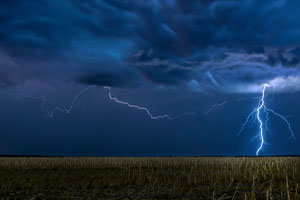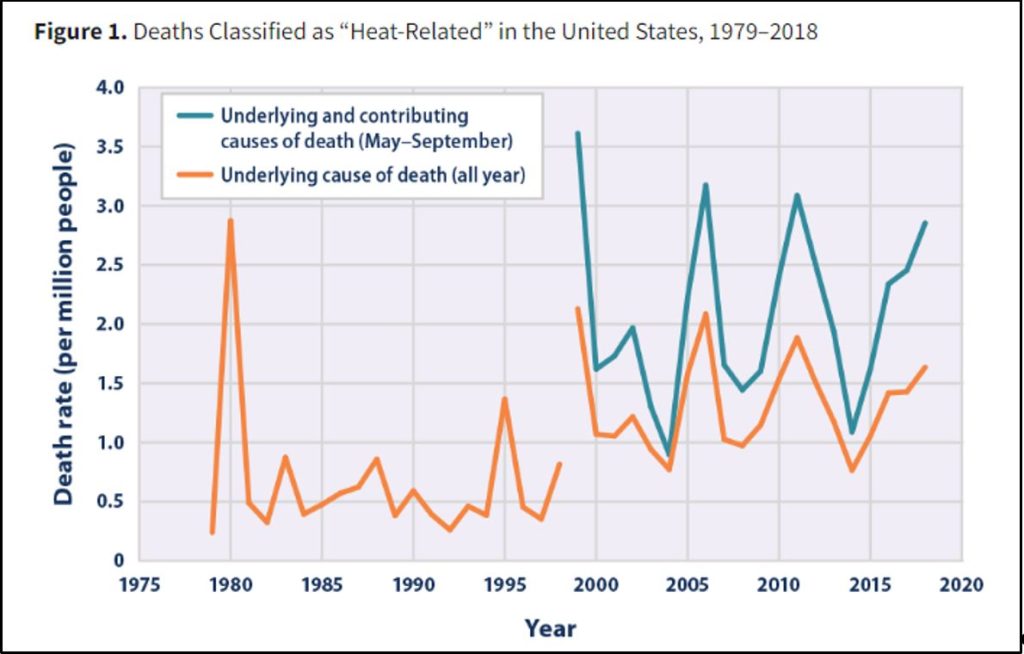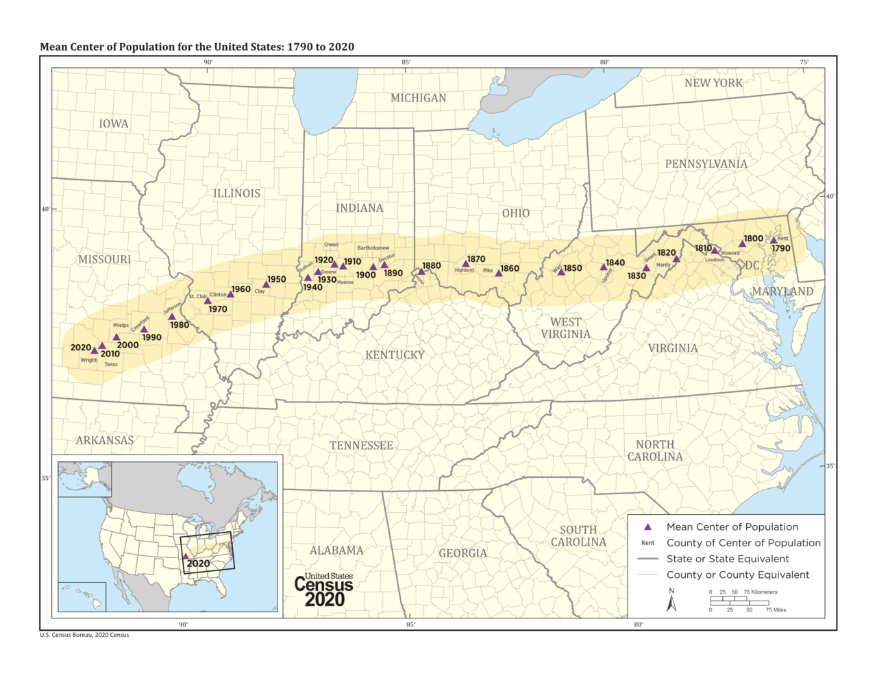
A recent article in the Washington Post began with a frightening sentence. “Extreme Heat kills more people in the United States than any other weather hazard.” A few minutes of Internet searching found virtually the same sentence on NBC News, which attributed it to the National Weather Service. CNN said the same thing, as did the long-standing (est. 1845) interpreter of the natural and technological worlds, Scientific American.
Does “Trust the Science” Extend to Newspaper Reports?
There is only one problem—it can’t be true. The Washington Post should know this. Last February, they told a far different—but no less alarmist—story in an article that began, “Both heat and cold can kill. But cold is far more deadly. For every death linked to heat, nine are tied to cold.”
In these days of climate change hysteria, we should expect this kind of alarmist rhetoric. The mainstream press—populated mainly by leftists—has been trying since the early seventies to convince the world that manmade factors are changing the weather so that humanity faces imminent extinction.
All of the wizards of science claim human activities are causing minute temperature changes that will have massive effects. However, if this impact is cumulative, shouldn’t the heat-related death rate be constantly rising? However, the Environmental Protection Agency (EPA) released the following chart:

The EPA advises us to ignore everything before 1999 because their calculation process changed. However, the rate of heat-related deaths fluctuated wildly over almost twenty years between 1999 and 2018 instead of reflecting a steady increase.
A Non-Alarmist Weighs In
Much of this number crunching is courtesy of David Harsanyi at The Liberty Dispatch. Mr. Harsanyi is more of a skeptic than an alarmist. He cites the Centers for Disease Control (CDC) total figure for all weather-related deaths as “around 700” Americans yearly. He also quotes the Washington Post’s estimate that 62 million people were “exposed” to dangerously high temperatures “today”—meaning July 5, 2023, was a hot day in much of the country. No doubt those temperatures caused much discomfort and some danger, although not to the extent that the global warming alarmists assert.
Help Remove Jesus Bath Mat on Amazon
Mr. Harsanyi offers three explanations for this widespread exposure, to be discussed from simplest to most complex. Each is an incomplete explanation, but all provide vital pieces to the puzzle.
“Gone South”
First, the population of the United States has steadily shifted to the southwest. Any doubter can consult a map prepared by the U.S. Census Bureau showing the “mean center of population of the United States.” After holding in a relatively straight line until 1920, it began to shift to the south at a more or less steady rate. For most of those who moved south, it was a free choice. Of course, a primary attraction for many of these people was higher temperatures. Apparently, having a warmer winter more than offsets a hotter summer.
 While the move to the South and West has been gradual, the sharply aging U.S. population is a more dramatic reason. In June 2020, the Census Bureau released a statement summarizing the process in two sentences.
While the move to the South and West has been gradual, the sharply aging U.S. population is a more dramatic reason. In June 2020, the Census Bureau released a statement summarizing the process in two sentences.
An Older Population
“The U.S. Census Bureau today released estimates showing the nation’s 65-and-older population has grown rapidly since 2010, driven by the aging of Baby Boomers born between 1946 and 1964. The 65-and-older population grew by over a third (34.2% or 13,787,044) during the past decade, and by 3.2% (1,688,924) from 2018 to 2019.”
Satanic Christ Porn-blasphemy at Walmart — Sign Petition
The same report included a map showing that the areas of the most significant increase tended to be in the South and the West.
The most complicated of Mr. Harsanyi’s three reasons is that other weather events have less impact than formerly. Such an argument may seem strange to modern ears. The press trumpets every major weather event as “unprecedented” and “catastrophic.” Any accurate understanding of this factor requires an examination of similar weather events over a long period. This author will use two hurricanes that hit Miami, Florida, with similar force.
A Tale of Two Hurricanes
Early on September 18, 1926, a massive hurricane hit Miami. The exact wind speed is unknown, as the storm’s force destroyed all the devices that could have measured it. It was at least Category Four (130-156 mph). According to the National Weather Service, 372 people died, over 6,000 were injured, and $105 million in property damage occurred. According to the U.S. Inflation Calculator, that translates to $1.8 billion in 2023 dollars.
Almost sixty-six years later, Hurricane Andrew struck Miami on August 24, 1992. Given that Miami was far bigger in 1992 than in 1926, the massive increase in damage loss—$26.5 billion ($54.4 billion in 2023)—is no surprise. However, the loss of life was far lower—estimated at less than twenty-five.
How Panera’s Socialist Bread Ruined Company
The significant decrease in loss of life is attributed to better information.
In 1926, the Weather Bureau issued the first official warnings less than six hours before the storm hit, at 11:00 p.m. on September 17, when most Miamians were asleep. A second factor was that the eye of the storm passed over downtown Miami around 6:30 a.m. The city’s population had more than doubled since 1920. Thus, most people probably never experienced a hurricane. They thought that the sudden calm weather caused by the eye meant that the storm was over and left their places of shelter. Thousands were caught outside when the more destructive half of the storm hit a few minutes later.
On the other hand, everyone knew Andrew was on the way three days before it hit. Even though massive numbers turned up to purchase emergency supplies (this author spent four hours standing in the checkout line at the local wholesale club), that still provided ample time to board windows and secure a food and water supply.
Feeling the Heat but Not Doing Much
Unlike hurricanes and other major weather incidents, the general population takes extreme heat far less seriously. It is a common occurrence. Every adult has lived through countless hot days and views the heat as an inconvenience rather than a real danger. For most, cranking up the air conditioning and staying hydrated is enough.
What Does Saint Thomas Aquinas Say About Marriage?
It is probably useless to e-mail this article to friends who express concern over the climate. Unfortunately, the alarmists prefer the sensational answer to detailed analysis. Having paid attention to a largely phantom risk for so long, they invested themselves in their belief that every slightly unusual weather event is a sign of the climate change apocalypse.
Alarmism vs. Assurance
Such alarmism is immensely popular. It is born in too many “environmental science” classrooms and spread by too many television station meteorologists. The weather apocalypse fits into leftist narratives that blame capitalism and patriarchy for every ill and propose government solutions.
Christians have yet another source of assurance. They can rest secure in the fact that, ultimately, God controls the weather and that the same God cares for all humanity. Come wind and high water; we can trust the God who created all people and desire their good.
Photo Credit: © cherylvb – stock.adobe.com


